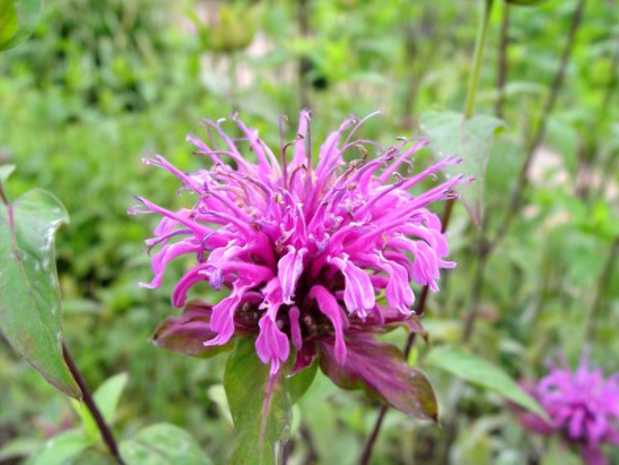

Play Value: Attracts Pollinators Colorful Fragrance Wildlife Food Source Particularly Resistant To (Insects/Diseases/Other Problems): This plant is resistant to damage by deer and rabbits. Members of the genus Monarda support the following specialized bees: Dufourea monardae, Perdita (Perdita) gerhardi, and Protandrena abdominalis. Life Cycle: Perennial Recommended Propagation Strategy: Division Leaf Cutting Seed Country Or Region Of Origin: Eastern North America Distribution: CT, GA, IA, IL, IN, KY, MA, MD, ME, MI, MN, MO, NC, NH, NJ, NY, OH, OR, PA, SC, TN, VA, VT, WA, WI, WV Fire Risk Rating: medium flammability Wildlife Value: Attracts bumblebees, swallowtail butterflies, and Ruby-throated hummingbirds. It is a larval host to the hermit sphinx, orange mint moth, and the raspberry pyrausta. The Oswego Indians of New York state also used the leaves for tea.
#Bee balm plant information full
See this plant in the following landscapes: Mostly Native Vegetable, Herb and Pollinator Garden Davidson County Demo Garden Vegetable Garden and Pollinator Plants Pollinator Garden- Full Sun Pollinator Garden- Partial Shade Wildlife Garden- Bird Sanctuary Pond Garden Herb & Flower Cottage Garden Bee Hive Garden, Wake Co Foundation Planting- West Side of House Border Landscape Pinewild County Club, Moore County Cultivars / Varieties: Avoid overhead watering to minimize mildew. Insects, Diseases, and Other Plant Problems: Plants are susceptible to powdery mildew and rust.


Flowers are two-lipped, elongated, thin corolla tubes.Inflorescence is leafy-bracketed, dense glomerules.Leaves are coarse, pubescent, minute axillary leafy shoots.Stems are erect and square with opposite leaves.It is used in herbal medicine, and its flowers are edible. Blossoms attract bees, hummingbirds, and butterflies, and the leaves have a minty aroma when crushed.īee balm provides color and contrast for the perennial border, cottage garden, specimen planting, native and pollinator garden, meadow, naturalized planting, and along ponds or streams. Bee balm can reach a height of 4 feet and will spread rapidly by underground stolons. This plant prefers moist, well-drained soils and full sun but will tolerate some shade. Native to the North Carolina mountains, it may be seen along the Blue Ridge Parkway flowering during the summer months. Phonetic Spelling mo-NAR-da DID-ee-mah Descriptionīee balm is an herbaceous perennial in the Lamiaceae (mint) family.


 0 kommentar(er)
0 kommentar(er)
